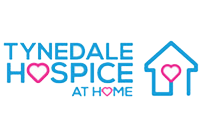 Quantifying feelings, emotions and feedback for Tynedale Hospice
Quantifying feelings, emotions and feedback for Tynedale Hospice
Tynedale Hospice at Home provides end of life care, family support and transport to families in the North East of England.
The request
Tynedale Hospice at Home collects data from children and young people receiving bereavement support. They also receive thank you cards for their care for people’s loved ones and wanted some quantitative measure of these areas of their work which were considered qualitative feedback. This would help strengthen their applications for future funding.
The approach
The organisation runs bereavement support sessions with children where they use feeling cards (also called 'blobby cards') to initiate conversation and help the children explain how they are feeling – pre and post intervention. The volunteer assessed all examples and separated the cards into positive or negative emotions/feelings. They created a measure of effectiveness using a change in percentage of positive cards selected during a feeling cards exercise at the two time periods. If there is a positive change (ie the percentage of positive cards increases), this will be considered to show that the support has been successful.
As the children are encouraged to talk through their feelings, there was a good supply of quotes that could be used to demonstrate how things have changed and how they are positive changes. The volunteer encouraged the use of quotes, in particular quotes that are not personally identifiable, as they would enhance the numbers by showing improvement and show more clearly what has changed for the child.
Tynedale Hospice at Home wanted to be able to quantitatively record the thank you cards sent by friends and relatives of those cared for. The volunteer worked with staff to categorise comments from the cards into key values of the hospice. They produced a spreadsheet that would calculate the percentage score for each value when data are entered from any card received.
The result
- Two scoring systems to capture quantitative feedback from qualitative work. The first was to use a change in percentage of positive cards from all cards selected in a feeling cards exercise carried out by staff with children following bereavement at two time periods.
- The second system offers the ability to allocate text from “Thank You” cards received across the key values of the hospice. A percentage score was attributed by taking a percentage of the number of cards that mentioned a key value, of the total number of cards received.
- The organisation uses a quantitative evaluation sheet and the volunteer reviewed some of the forms to ensure they had applied the prescribed scoring system correctly. They were able to confirm all forms had been marked and scored as expected.
The benefits
- Tynedale Hospice at Home was pointed in the right direction for capturing qualitative data and using it to produce descriptive statistics which will be useful in future bids for financial support.
- Tynedale Hospice at Home has revised their databases to include the work that the volunteer undertook and these became live in April 2019.
- The volunteer found the work very interesting and rewarding, and was pleased to be involved. They enjoyed being able to put their technical skills to good use for such a wonderful charity, who simply don’t have the capacity (or need) to employ a statistician full time.
Fiona Hutchinson, Head of Care Services for Tynedale Hospice at Home wrote:
'The majority of our funding (90%) is by charitable donation and application for trust funding. It is therefore very important to us that we can demonstrate to potential donors that our service provision is of value to the community it serves. We do not have large numbers of patients and clients; therefore, we have to maximise interpretation of all data we receive. I would like to take this opportunity to say, ‘thank you’ again to volunteer and the RSS for your help.'